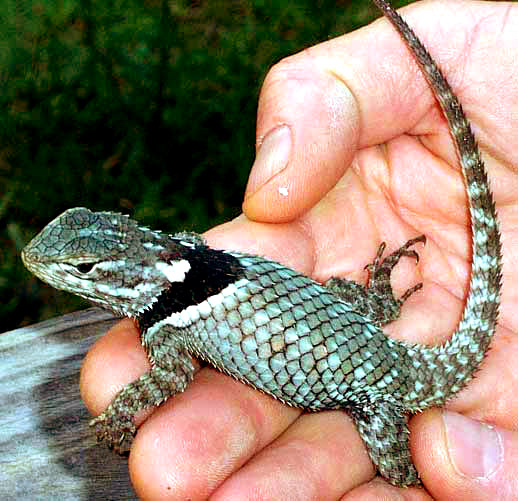Excerpts from Jim Conrad's
Naturalist Newsletter
from the April 28, 2007 Newsletter issued from Sierra Gorda Biosphere Reserve, QUERÉTARO, MÉXICO
SCELOPORUS GEMINUS

During car trips between destinations I rode with Roy, the Peace Corps coordinator for this part of the world. Not only did Roy entertain us with stories from a life spent in Africa, Latin America and the South Pacific, but also he was a herper -- an enthusiast of reptiles and amphibians. Wherever we went Roy was always turning over rocks and on roads he always stopped to examine scaly roadkill.
Therefore, on our first night out -- ~1400m (4600ft), ~N21.47°, ~W99.17° -- when I was putting up my tent and noticed a bluish lizard with a striking black collar around its neck, I called for Roy. As I tilted up the piece of plywood the lizard had hidden beneath, Roy jumped for the critter, missed him a few times, but then caught him with his hands, being sure not to grab the tail because he didn't want that to come off in his hands.
Seven species of Sceloporus are officially listed for the Reserve. I've already introduced you to Sceloporus grammicus (Mesquite Lizard), which is abundant on exposed rocks everywhere. That species is pretty bland looking, but this one with its black collar with a white fringe, and a bluish body really has pizzazz.
Of course we released the critter. No collecting is permitted inside the reserve without a hard-to-get permit. And we wouldn't have wanted to remove the animal from his ecosystem, anyway.